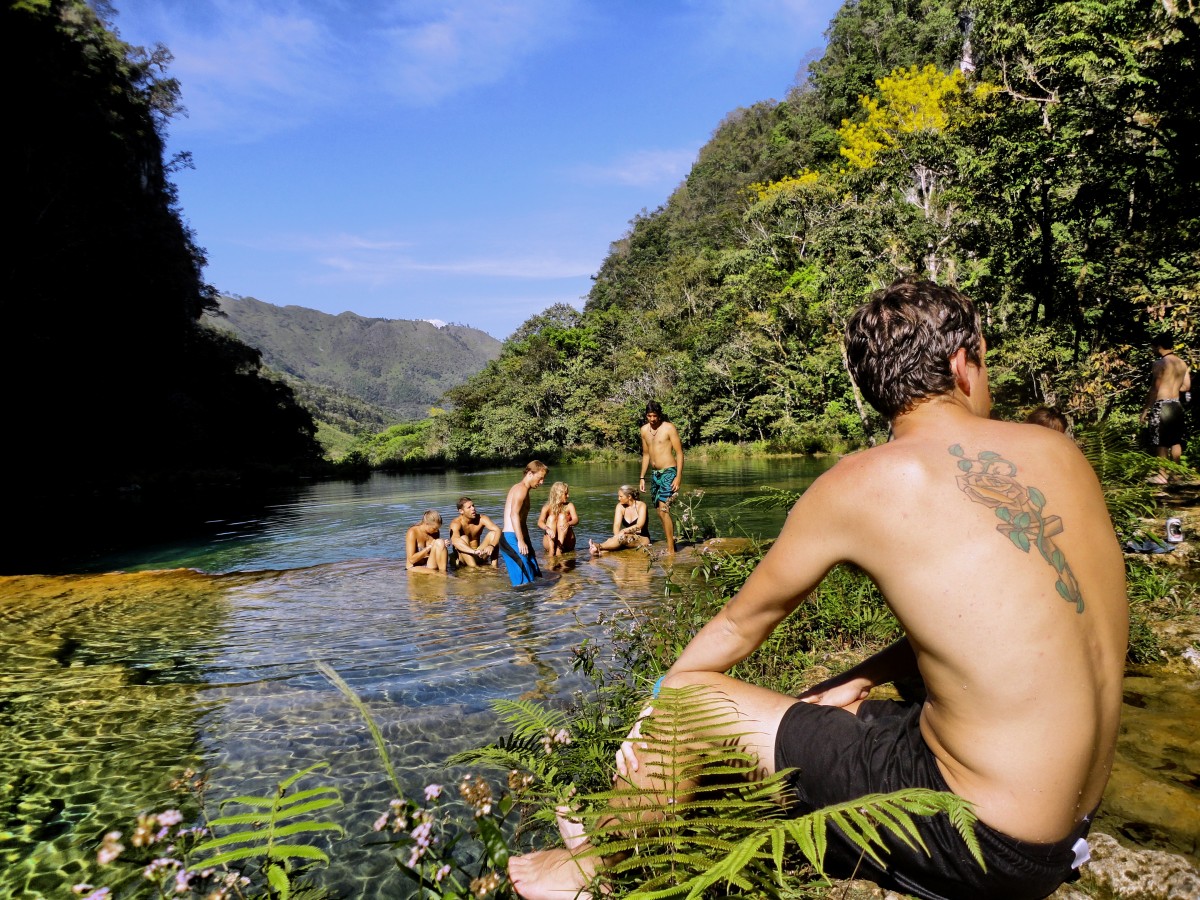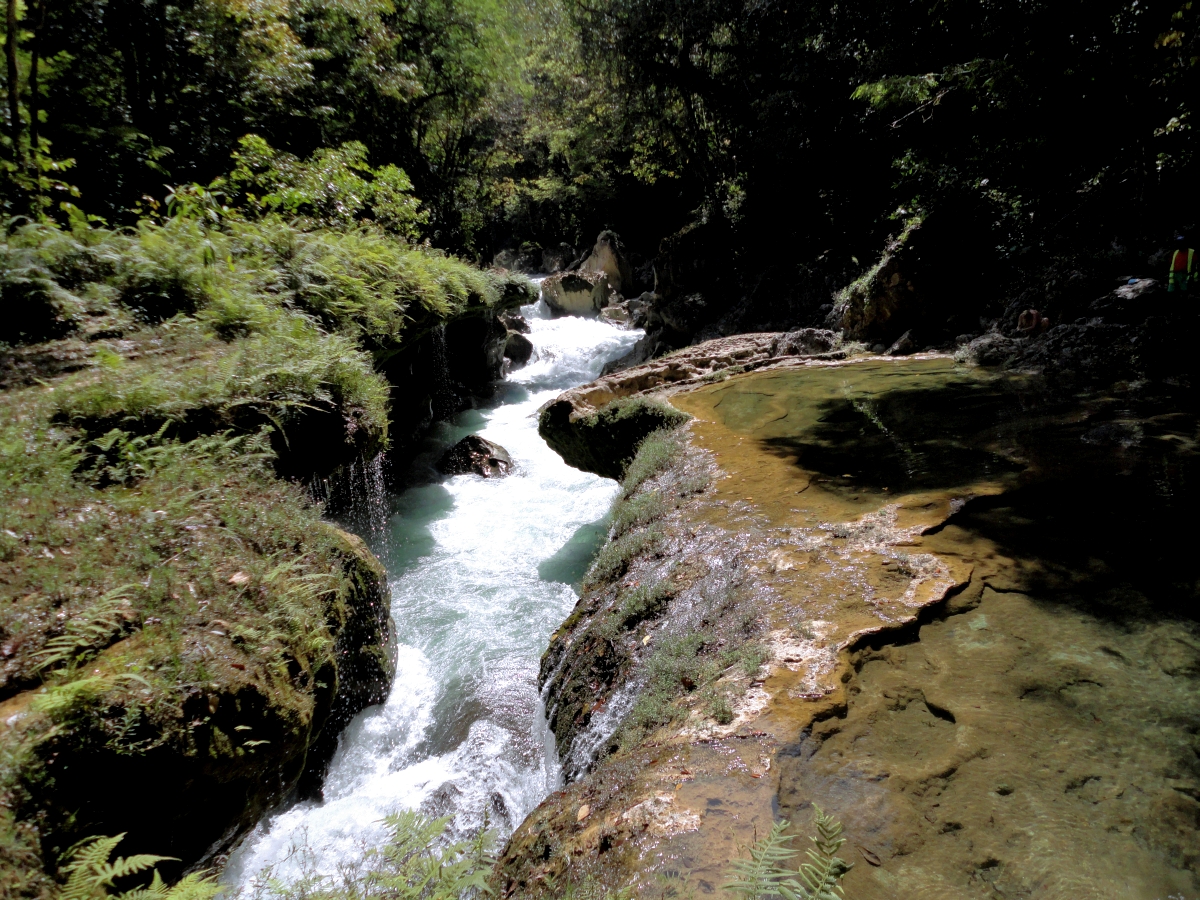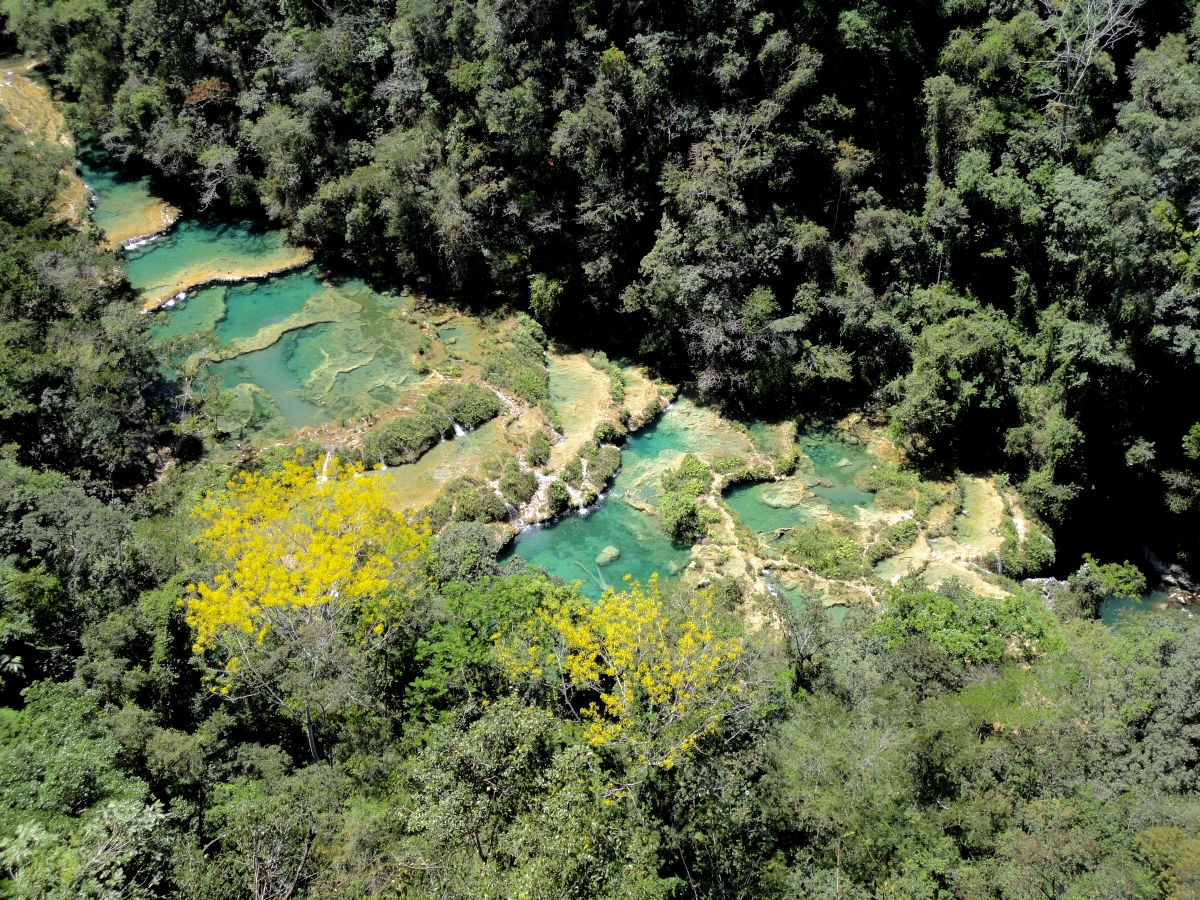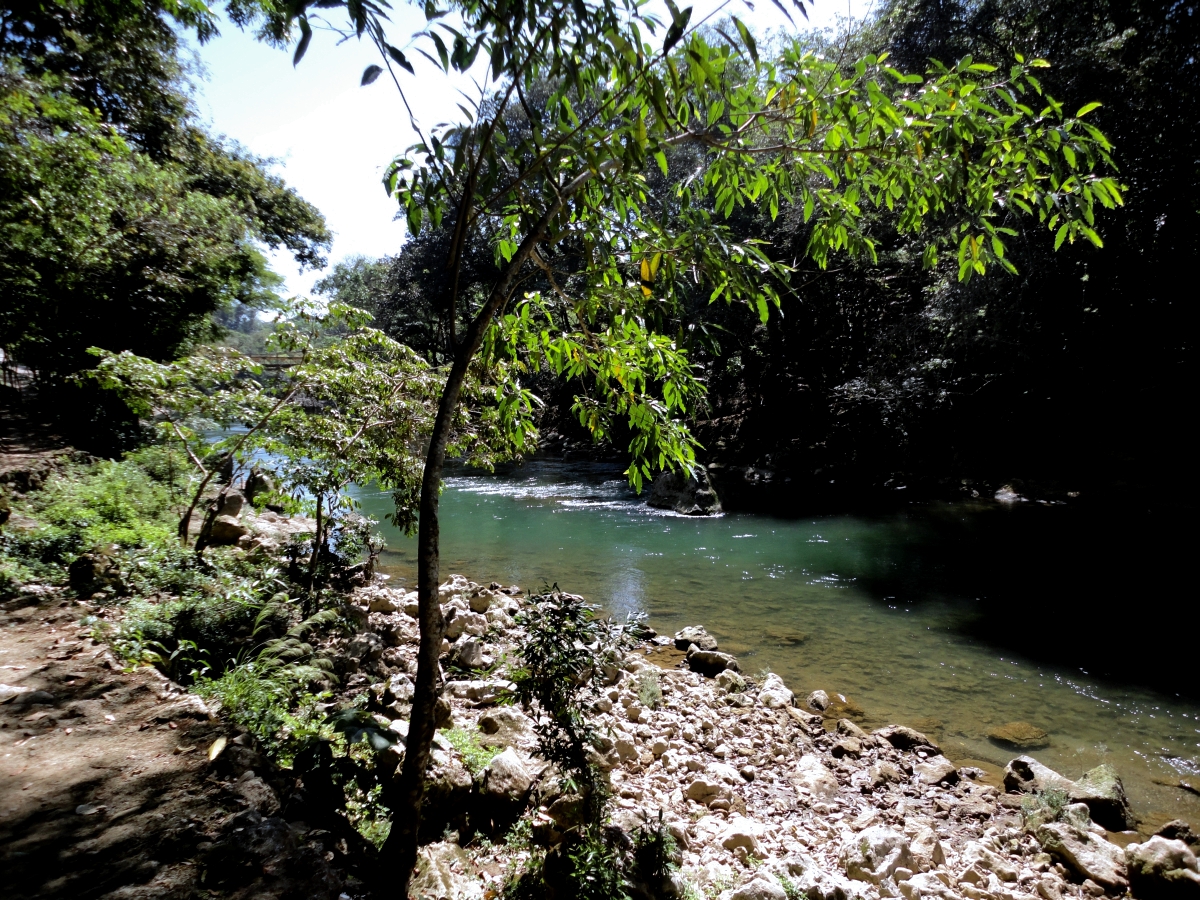My Discovery Of Eden In Semuc Champey, Guatemala

I’m riding in the back of an open truck that must have served to transport cattle at some point, but on this occasion, it is taking me from the town of Lanquín to the secluded community of Semuc Champey, in the heart of the Guatemalan jungle.
Riding with me is my girlfriend and about a dozen tall, heavy-set men. I exchange a few words with some of them and find out they are army guys, taking a vacation-break away from their training base several miles away. Right now though, they look mostly like tourists, goofing around and taking selfies as the jungle zooms by all around us.
The journey began in Antigua, a colonial city of pastel, multicolored houses, many of them former colonial estates, and a multitude of Baroque-styled cathedrals. At night, the cobblestone, quiet streets, dimly lit by the lampposts, transports me back to a pre-industrial era, a stark contrast to the Central Square area, where all the bars and cafes can be found, which give the city its vibrant nightlife and lively cultural scene.
Antigua is a key jumping-off point for moving deeper into Guatemala. From there it is easy to get a 6-hour-long bus ride to the town of Lanquin, some six miles away from Semuc Champey. While the climate is temperate in the higher altitudes of Antigua, the moment you get off the bus in Lanquin, you know you’re right in the tropical jungle.
Lanquín is the last stop where I can get what most Westerners consider everyday commodities, like all-day electricity, cell reception or internet connection. The community of Semuc is found one cattle-truck ride away, on the banks of the Cahabon river. This is a protected natural area and local custom holds great respect for the environment. The locals are for the most parts descendants of Q’eqchi’ Mayans, and many of them still speak — sometimes exclusively — the local dialect, Q’eqchi.

In Q’eqchi, Semuc Champey means, “Where the river hides beneath the earth,” which references a nearby location at the bottom of a steep valley called El Sumidero, where the Cahabón River flows underground, then comes back out at a source called El Manantial. This forms a natural stone bridge over 1,000 feet long, above which are a series of natural, turquoise-colored pools of pure spring water, streaming downriver in a steady flow.
I arrive at one of the few available accommodations nearby, a small eco-hotel called El Recreo, which runs on solar panels and generators, and is mostly built of rock, palm and adobe. A couple of girls in colorful, hand-woven dresses, who hardly speak a word of Spanish, come to greet us and pitch us some of their homemade produce, cocoa candies.
Looking back on it, this was actually one of the most memorable local delicacies I came across. The candies were homemade bars of pure cocoa paste, pressed by hand, mixed with spices, including cinnamon, chili and cardamom. I still sometimes get a deep, nostalgic craving for those spiced cocoa bars that those little girls made by hand and sold for a couple of quetzales to the tourists that came by.
There are abundant cocoa trees all around, and I learn from the hotelkeeper that you can crack a cocoa nut open and find a juicy, tender fruit inside, wrapped around the seeds and strongly resembling a human brain in appearance. The housekeeper tells me that in local lore, this is actually because cocoa fruit is said to be good for the brain. The fruit is sour, juicy and tender, incredibly tasty, and while most of us are familiar with cocoa nut, I realize most people have never even tried cocoa fruit, let alone even known it exists.
There is little to do during the day in Semuc Champey, but what a setting to do nothing at all. I’m inside the jungle, next to the river, reading, swimming and walking around town, which consists mostly of farms interconnected by trails through the jungle.

Throughout the days, I end up realizing everything goes at a different rhythm than I’m used to here. My girlfriend and I end up befriending the little girls who sell cocoa candies. They teach us a few words of Q’eqchi’, like Saq’ e’ (Sun) and ha (water). My girlfriend has an easier time learning the language than me. I suspect that after a month talking to these girls, she would be able to speak fluent Q’eqchi. The girls give us a tour around town, including a trip across the natural stone bridge to the entrance of a nearby reserve. On the way, we see the army men swimming in those turquoise pools. They wave at us from the distance, looking like kids fooling around in the water.
I am told there is a cave network nearby called Kam-Ba, where the river flows underground. I am led a couple of miles down to the entrance of a cave. There, we are handed candles and guided in through the complete darkness. The water was sometimes waist-high as I followed the dim light of the guide. Walking in front of me into the cavern, the open space seemed to stretched onward until it could reach the bowels of the earth — a sort-of entrance to a Mayan underworld. Bad idea to lose your light in here, which is exactly what our guide tells us to do after a while. Inside, in the darkness of the cave, all you can hear is the dripping from the stalactites and the occasional flapping of bat wings.

On our way back, I am given an inflatable tire and am allowed to drift on a slow, scenic ride down the river, which ends with a little swim back to the riverbank facing the hotel. I am exhausted. That night we get to build a bonfire on the riverbed with some of the other guests, who are, for the most part, international, barefoot backpackers on a budget, and we stay out stargazing through the treetops, listening to the sounds of the jungle.
There is, in particular, a strident whistling that I imagined could only come from some local bird. Actually, I am told that this sound is emitted by a small insect called a chicharra. There is a constant, chirping, hissing, coo-cooing, all around us. All of these sounds intermingle, creating a rhythmic beat that never ceases. You tend to think that the nighttime in the jungle is silent, but it is actually surprisingly noisy.
It was tough to leave Semuc. After just a few days there I had gotten used to the rhythm, to the constant, high-pitched chirping of the chicharras, and to sitting on the riverbank, watching the river flow.
The girls wave us good bye. The off-duty army members are nowhere to be seen, probably floating downriver on an inner-tube, in the beer-induced stupor that only a leave of absence can bring on. I get my last load of cocoa candy, and the girls wave us off as the cattle truck drives uphill. As we leave town, the humidity lifts instantly, and I feel like we’re leaving a small patch of Eden behind.

/
 Mateo Garcia is a freelance author, journalist and travel writer. You can check out his blog at TrippyFiction.blogspot.com.
Mateo Garcia is a freelance author, journalist and travel writer. You can check out his blog at TrippyFiction.blogspot.com.
